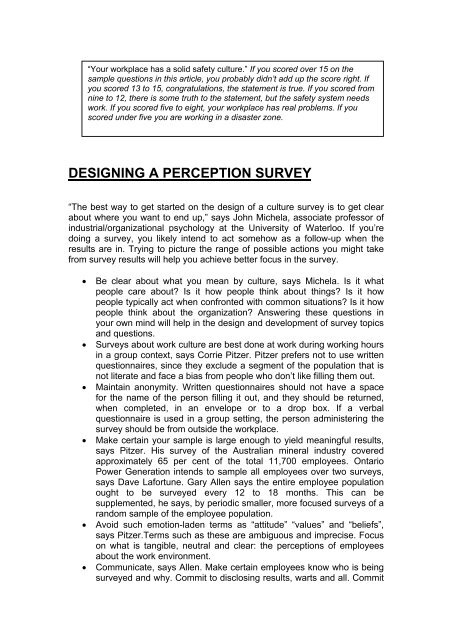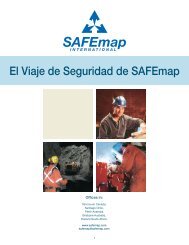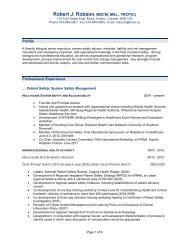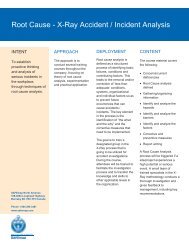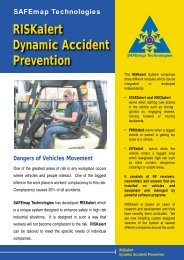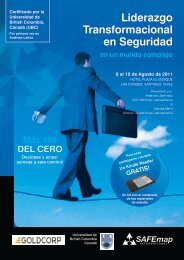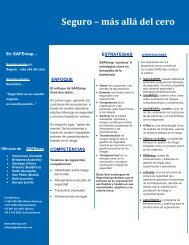A Matter of Perception - SAFEmap International
A Matter of Perception - SAFEmap International
A Matter of Perception - SAFEmap International
Create successful ePaper yourself
Turn your PDF publications into a flip-book with our unique Google optimized e-Paper software.
“Your workplace has a solid safety culture.” If you scored over 15 on thesample questions in this article, you probably didn’t add up the score right. Ifyou scored 13 to 15, congratulations, the statement is true. If you scored fromnine to 12, there is some truth to the statement, but the safety system needswork. If you scored five to eight, your workplace has real problems. If youscored under five you are working in a disaster zone.DESIGNING A PERCEPTION SURVEY“The best way to get started on the design <strong>of</strong> a culture survey is to get clearabout where you want to end up,” says John Michela, associate pr<strong>of</strong>essor <strong>of</strong>industrial/organizational psychology at the University <strong>of</strong> Waterloo. If you’redoing a survey, you likely intend to act somehow as a follow-up when theresults are in. Trying to picture the range <strong>of</strong> possible actions you might takefrom survey results will help you achieve better focus in the survey.• Be clear about what you mean by culture, says Michela. Is it whatpeople care about? Is it how people think about things? Is it howpeople typically act when confronted with common situations? Is it howpeople think about the organization? Answering these questions inyour own mind will help in the design and development <strong>of</strong> survey topicsand questions.• Surveys about work culture are best done at work during working hoursin a group context, says Corrie Pitzer. Pitzer prefers not to use writtenquestionnaires, since they exclude a segment <strong>of</strong> the population that isnot literate and face a bias from people who don’t like filling them out.• Maintain anonymity. Written questionnaires should not have a spacefor the name <strong>of</strong> the person filling it out, and they should be returned,when completed, in an envelope or to a drop box. If a verbalquestionnaire is used in a group setting, the person administering thesurvey should be from outside the workplace.• Make certain your sample is large enough to yield meaningful results,says Pitzer. His survey <strong>of</strong> the Australian mineral industry coveredapproximately 65 per cent <strong>of</strong> the total 11,700 employees. OntarioPower Generation intends to sample all employees over two surveys,says Dave Lafortune. Gary Allen says the entire employee populationought to be surveyed every 12 to 18 months. This can besupplemented, he says, by periodic smaller, more focused surveys <strong>of</strong> arandom sample <strong>of</strong> the employee population.• Avoid such emotion-laden terms as “attitude” “values” and “beliefs”,says Pitzer.Terms such as these are ambiguous and imprecise. Focuson what is tangible, neutral and clear: the perceptions <strong>of</strong> employeesabout the work environment.• Communicate, says Allen. Make certain employees know who is beingsurveyed and why. Commit to disclosing results, warts and all. Commit


